Global steel boom builds as rampant demand overwhelms supply
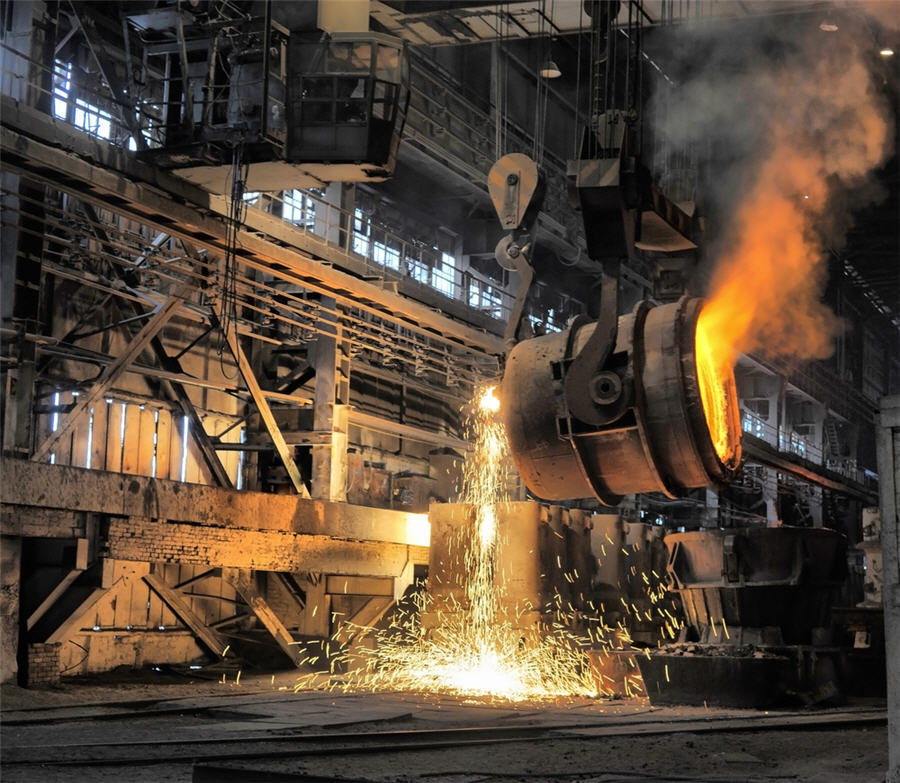
Steel prices are spiking from Asia to North America, and iron ore’s relentless march toward a record is accelerating, as bets on a global economic recovery fuel frenzied demand.
The world outside China is finally catching up with the Asian steel giant’s already strong markets as a global rebound drives a powerful wave of buying that can’t be matched by production. Sectors such manufacturing and construction are ramping up and governments have pledged to splurge on infrastructure as they map their post-pandemic path back to growth.
Mills’ order books are filling up as buyers look to lock in steel after a year of output curbs and idling of plants. On top of that, the biggest iron ore miners have been hampered by operational issues, tightening a market that hadn’t fully recovered from a supply shock more than two years ago.
Here’s four charts that show what’s behind the sudden surge in ferrous markets.
Pricing power
Prices for hot-rolled coil, a benchmark steel product, are up threefold in North America from pandemic lows and they’re also soaring in Europe. In China, which has already enjoyed a year of robust demand, steel is the most expensive since 2008.
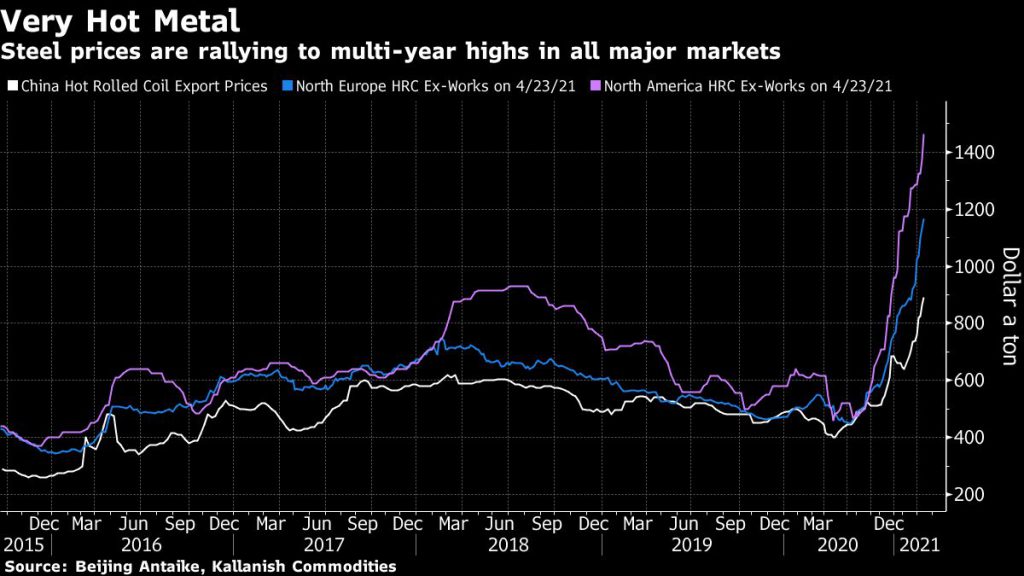
That’s a boon for steelmakers, who are suddenly enjoying healthy margins — and optimism — after a miserable year. South Korea’s Posco, one of the top suppliers outside China, just posted its best quarterly profit since 2011 and expects the recovery will continue in the second half on stimulus and the rollout of coronavirus vaccines.
Going global
Worldwide steel demand will grow 5.8% this year to exceed pre-pandemic levels, according to the World Steel Association. China’s consumption, about half of the global total, will keep growing from record levels, while the rest of the world rebounds strongly.
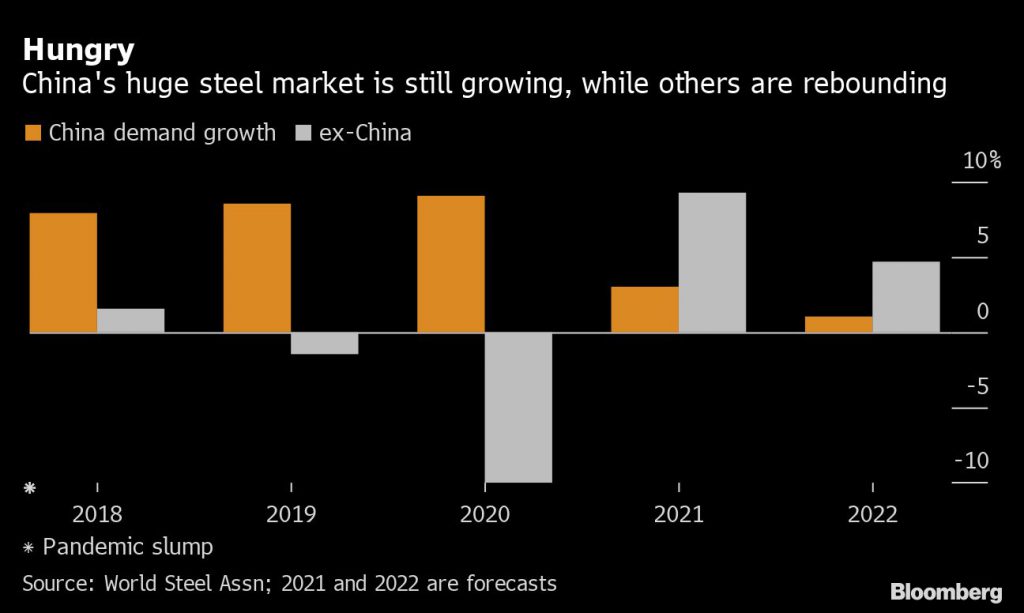
“Lead times are really, really long and some mills are saying they are selling for the third or even fourth quarter,” Tomas Gutierrez, analyst at researcher Kallanish Commodities, said by phone. “There’s optimism on the demand this year with the Covid recovery, and a lot of stimulus plans. Demand outside China in April is higher than we’ve seen in many, many years.”
Material increase
Iron ore is enjoying a sudden rebound to near-record levels — spot prices are less than $1 away from their peak of $194 a ton — as China’s steelmakers keep output rates at more than a billion tons a year to feed still rampant consumption from a busy economy. While Beijing has set a goal of reducing steel production this year, that could prove difficult with consumption as strong as it stands.
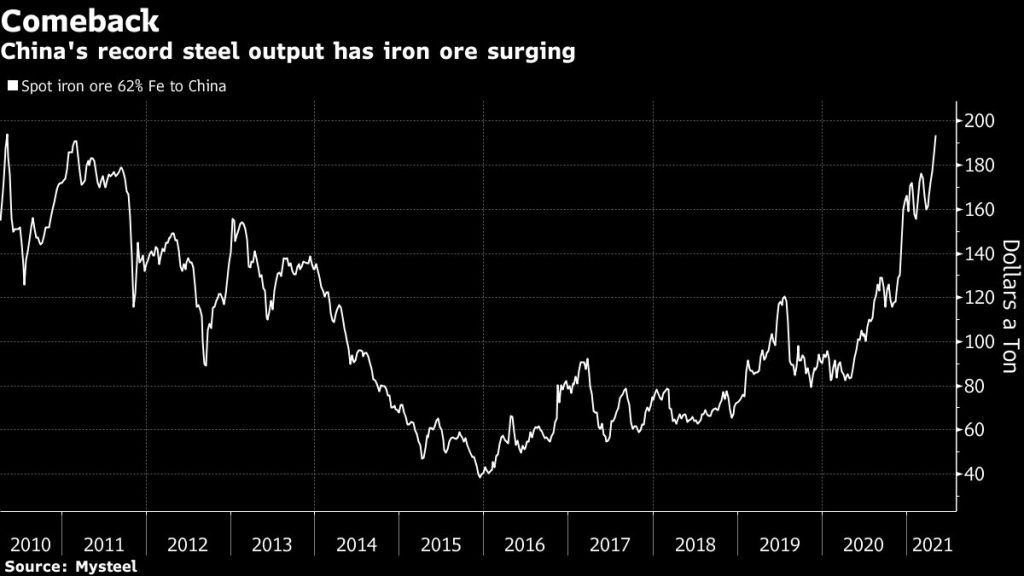
Robust iron ore prices have bolstered earnings at the world’s top miners, even as they struggle to supply enough of the raw material. Brazil’s Vale SA churned out less than expected last quarter after lower productivity at one mine and a ship loader fire, slowing its recovery from an early-2019 dam disaster. BHP Group and Rio Tinto Group said quarterly shipments dropped on weather disruptions in Australia.
“There’s a high possibility that Chinese steelmakers will ride the wave of this uptrend and accelerate production, at least this year,” Australia & New Zealand Banking Group Ltd. analysts including Daniel Hynes wrote in a note. A long-awaited wave of extra iron ore supply, especially from key shipper Brazil, hasn’t yet materialized as the bears expected.
Making money
Meanwhile, higher steel prices and China’s effort to clean up its mammoth and heavy-polluting industry with targeted production curbs has pushed profitability at mills to the highest in more than a decade, according to a Bloomberg Intelligence gauge.
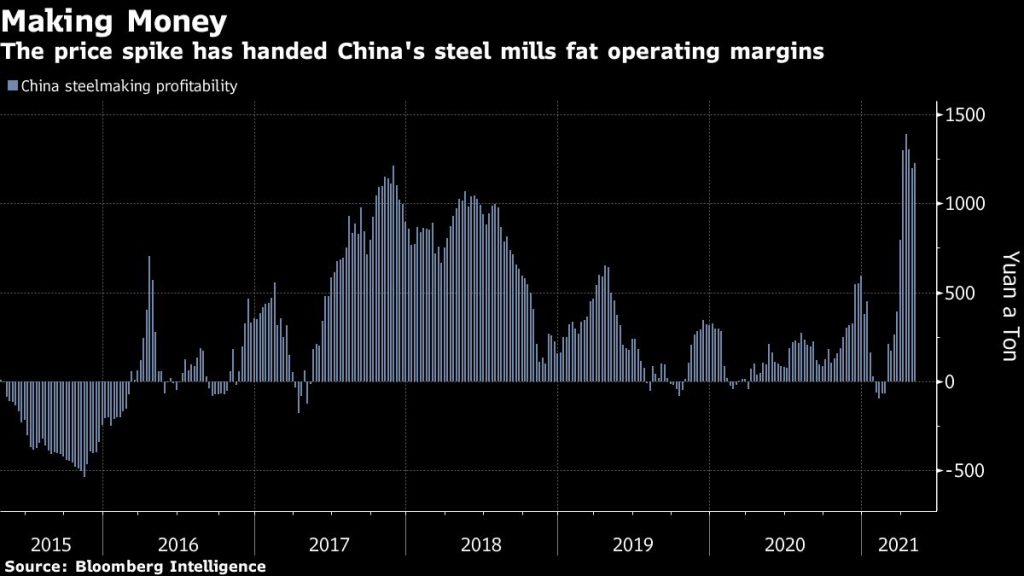
Steel margins in China “continue to suggest that current iron ore prices are sustainable in the near‑term” and would need to go negative for iron ore prices to correct lower, Commonwealth Bank of Australia analyst Vivek Dhar wrote in a note.
{{ commodity.name }}
{{ post.title }}
{{ post.date }}
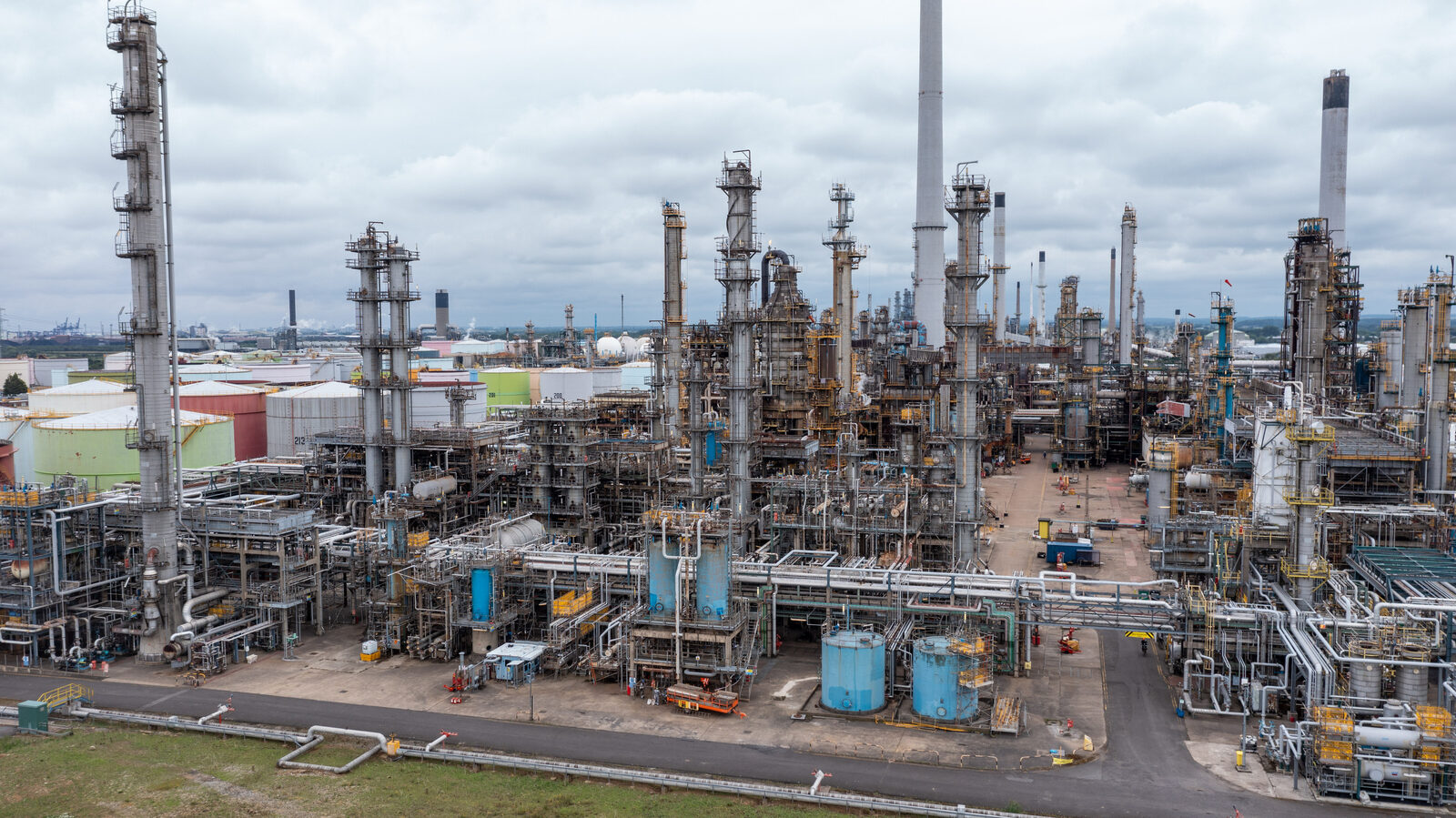
Comments